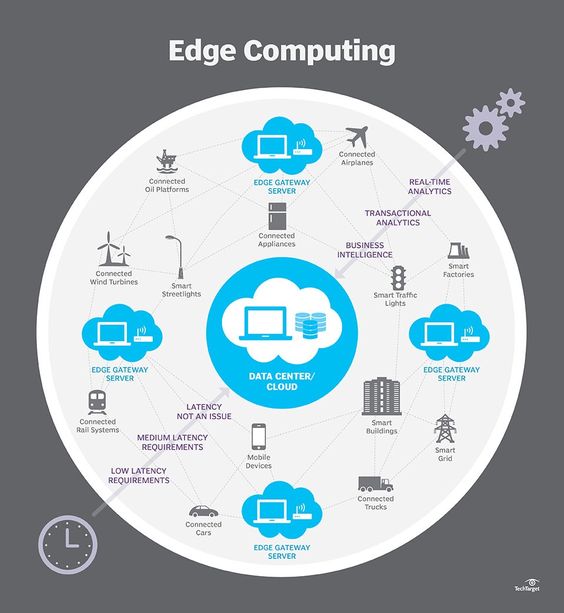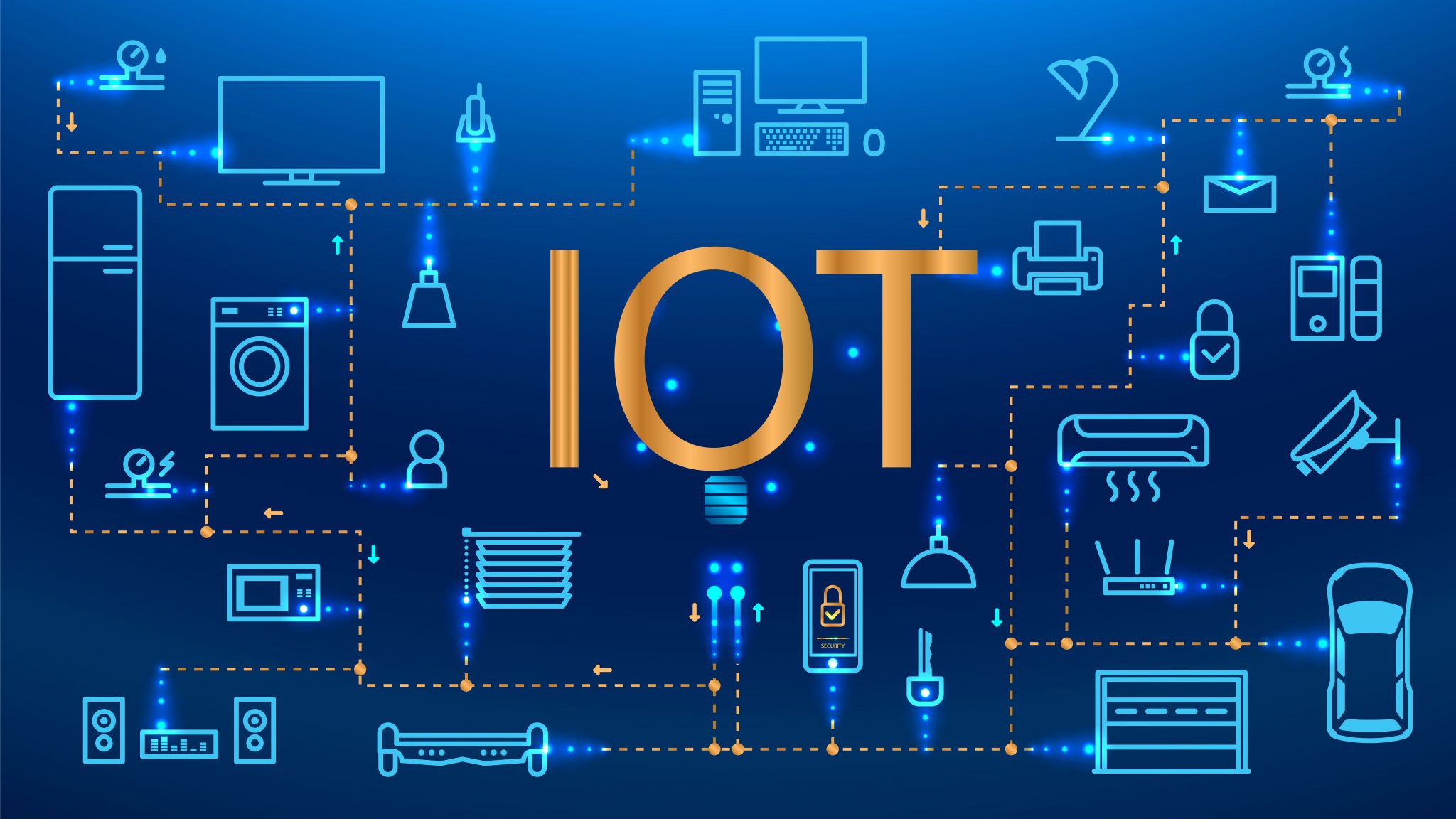An Introduction To Edge AI: Bringing Intelligence To IoT Devices

Edge AI is a rapidly growing field that brings the power of artificial intelligence to Internet of Things (IoT) devices. By processing data locally on the device, Edge AI enables IoT devices to make intelligent decisions and take actions in real-time, without the need for a centralized cloud connection.
.png)
Benefits of Edge AI

There are many benefits to using Edge AI, including:
- Reduced latency: By processing data locally, Edge AI eliminates the latency involved in sending data to the cloud and waiting for a response. This makes it ideal for applications where real-time decision-making is essential, such as self-driving cars and industrial automation.
- Increased privacy: Because data is processed locally on the device, it is never sent to the cloud. This reduces the risk of data breaches and unauthorized access.
- Reduced bandwidth: By processing data locally, Edge AI reduces the amount of bandwidth required for IoT devices to communicate with the cloud. This can save money on data costs and improve network performance.
- Improved scalability: Edge AI can help to improve the scalability of IoT deployments by reducing the amount of data that needs to be processed in the cloud. This makes it possible to deploy IoT solutions with a large number of devices without compromising on performance.
Applications of Edge AI
Edge AI is being used in a wide range of applications, including:
- Autonomous vehicles: Edge AI enables self-driving cars to make intelligent decisions in real-time, such as avoiding obstacles and following traffic laws.
- Industrial automation: Edge AI is used to automate industrial processes, such as monitoring equipment and predicting maintenance needs.
- Healthcare: Edge AI is used to develop medical devices that can make intelligent decisions, such as diagnosing diseases and administering medication.
- Retail: Edge AI is used to improve the customer experience in retail stores, such as by providing personalized recommendations and targeted advertising.
Conclusion
Edge AI is a powerful tool that can bring the benefits of AI to IoT devices. By enabling devices to process data locally, Edge AI reduces latency, improves privacy, reduces bandwidth consumption, and improves scalability. As the field of Edge AI continues to grow, we can expect to see more and more innovative applications for this technology.## An Introduction To Edge AI: Bringing Intelligence To IoT Devices
Edge AI is a rapidly growing field that is revolutionizing the way we interact with the world around us. By bringing artificial intelligence (AI) to the edge of the network, we can enable IoT devices to make intelligent decisions in real-time, without the need for cloud connectivity. This has the potential to unlock a wide range of new applications, from self-driving cars to smart cities.
Executive Summary
Edge AI is a powerful new technology that has the potential to transform the way we live and work. By bringing AI to the edge of the network, we can enable IoT devices to make intelligent decisions in real-time, without the need for cloud connectivity. This has the potential to unlock a wide range of new applications, from self-driving cars to smart cities.
Introduction
Edge AI is a subfield of AI that focuses on bringing intelligence to the edge of the network. This is in contrast to traditional AI, which is typically deployed in the cloud. Edge AI devices are typically small, low-power devices that are deployed in close proximity to the data they are processing. This allows them to make intelligent decisions in real-time, without the need for cloud connectivity.
There are a number of benefits to using Edge AI. First, it can reduce latency. When AI is deployed in the cloud, there is a delay between when data is collected and when it is processed. This delay can be a problem for applications that require real-time decision-making. Edge AI can eliminate this delay by processing data locally.
Second, Edge AI can improve privacy. When AI is deployed in the cloud, data is often stored and processed on remote servers. This can raise privacy concerns, as data could be accessed by unauthorized individuals. Edge AI can help to protect privacy by keeping data local.
Third, Edge AI can reduce costs. When AI is deployed in the cloud, it can be expensive to store and process data. Edge AI can help to reduce costs by processing data locally.
[Top 5 Subtopics]
[1. Types Of Edge AI Devices]
There are a variety of different types of Edge AI devices available. Some of the most common types include:
- Gateways: Gateways are devices that connect IoT devices to the cloud. They can also perform edge AI processing, such as filtering and aggregation of data.
- Sensors: Sensors are devices that collect data from the physical world. They can be used for a variety of applications, such as monitoring environmental conditions or detecting motion.
- Actuators: Actuators are devices that control physical devices. They can be used for a variety of applications, such as turning on lights or opening doors.
- Cameras: Cameras are devices that capture images and video. They can be used for a variety of applications, such as facial recognition or object detection.
- Microcontrollers: Microcontrollers are small, low-power devices that can be used to control IoT devices. They can also perform edge AI processing, such as running simple machine learning models.
[2. Applications Of Edge AI]
Edge AI has a wide range of potential applications. Some of the most common applications include:
- Self-driving cars: Edge AI can be used to enable self-driving cars to make intelligent decisions in real-time. This includes detecting objects, pedestrians, and traffic signs, and making decisions about how to navigate the road.
- Smart cities: Edge AI can be used to make cities more efficient and livable. This includes monitoring traffic flow, detecting pollution, and optimizing energy consumption.
- Industrial automation: Edge AI can be used to automate industrial processes. This includes monitoring equipment, detecting defects, and optimizing production processes.
- Healthcare: Edge AI can be used to improve healthcare outcomes. This includes monitoring patient vital signs, detecting diseases, and providing personalized treatment.
- Retail: Edge AI can be used to improve the retail experience. This includes providing personalized recommendations, detecting fraud, and optimizing inventory management.
[3. Challenges Of Edge AI]
There are a number of challenges associated with Edge AI. Some of the most common challenges include:
- Latency: Edge AI devices often have limited processing power and memory. This can make it difficult to run complex AI models in real-time.
- Power consumption: Edge AI devices are often battery-powered. This can limit the amount of processing that can be performed on the device.
- Security: Edge AI devices are often deployed in untrusted environments. This makes them vulnerable to security attacks.
- Data privacy: Edge AI devices often collect and process sensitive data. This raises concerns about data privacy.
- Cost: Edge AI devices can be expensive to develop and deploy.
[4. The Future Of Edge AI]
Edge AI is a rapidly growing field with the potential to revolutionize a wide range of industries. As the technology continues to develop, we can expect to see even more innovative and groundbreaking applications of Edge AI.
[5. Edge AI Market Trends]
The Edge AI market is growing rapidly. According to a report by MarketsandMarkets, the Edge AI market is expected to grow from $1.18 billion in 2024 to $15.68 billion by 2024. This growth is being driven by a number of factors, including the increasing demand for self-driving cars, smart cities, and industrial automation.
Conclusion
Edge AI is a powerful new technology that has the potential to transform the way we live and work. By bringing AI to the edge of the network, we can enable IoT devices to make intelligent decisions in real-time, without the need for cloud connectivity. This has the potential to unlock a wide range of new applications, from self-driving cars to smart cities.
Keywords
- Edge AI
- IoT
- Artificial intelligence
- Machine learning
- Deep learning

it was amazing, i lik=ed it s=o much its co=ntent
I believe the post co=ntent i=s a littl=e bit confusin=g and no=t well structured
The content of the post explicitly describes the implementation of Edge AI in IoT devices.
In my opinion, the author should have provided more examples of Edge AI applications in IoT devices.
The post’s title is ironic, as Edge AI has been around for several years now.
I found the post’s content to be quite shallow and lacking in depth.
The author’s attempt to explain Edge AI is so convoluted that it made my head spin.
The post is very well-written and provides a clear understanding of Edge AI and its applications in IoT devices.
I’m not sure I understand the purpose of this post. It seems like a lot of jargon without much substance.
The author does a good job of explaining the technical aspects of Edge AI, but I would have liked to see more real-world examples.
I disagree with the author’s claim that Edge AI is the future of IoT. I believe that cloud-based AI will continue to play a major role.
The post’s title is a bit misleading, as the content doesn’t really focus on the intelligence of IoT devices.
I found the post to be very informative and helpful. I learned a lot about Edge AI and its potential applications.
The post is full of buzzwords and hype, but it doesn’t actually provide any useful information.